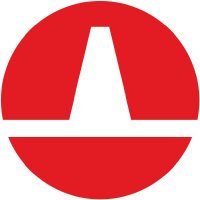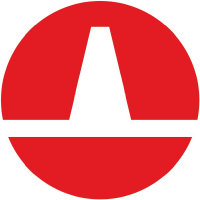
Patterson-UTI Energy Inc
NASDAQ:PTEN


| US |

|
Johnson & Johnson
NYSE:JNJ
|
Pharmaceuticals
|
| US |

|
Berkshire Hathaway Inc
NYSE:BRK.A
|
Financial Services
|
| US |

|
Bank of America Corp
NYSE:BAC
|
Banking
|
| US |

|
Mastercard Inc
NYSE:MA
|
Technology
|
| US |

|
UnitedHealth Group Inc
NYSE:UNH
|
Health Care
|
| US |

|
Exxon Mobil Corp
NYSE:XOM
|
Energy
|
| US |

|
Pfizer Inc
NYSE:PFE
|
Pharmaceuticals
|
| US |

|
Palantir Technologies Inc
NYSE:PLTR
|
Technology
|
| US |

|
Nike Inc
NYSE:NKE
|
Textiles, Apparel & Luxury Goods
|
| US |

|
Visa Inc
NYSE:V
|
Technology
|
| CN |

|
Alibaba Group Holding Ltd
NYSE:BABA
|
Retail
|
| US |

|
3M Co
NYSE:MMM
|
Industrial Conglomerates
|
| US |

|
JPMorgan Chase & Co
NYSE:JPM
|
Banking
|
| US |

|
Coca-Cola Co
NYSE:KO
|
Beverages
|
| US |

|
Walmart Inc
NYSE:WMT
|
Retail
|
| US |

|
Verizon Communications Inc
NYSE:VZ
|
Telecommunication
|
Utilize notes to systematically review your investment decisions. By reflecting on past outcomes, you can discern effective strategies and identify those that underperformed. This continuous feedback loop enables you to adapt and refine your approach, optimizing for future success.
Each note serves as a learning point, offering insights into your decision-making processes. Over time, you'll accumulate a personalized database of knowledge, enhancing your ability to make informed decisions quickly and effectively.
With a comprehensive record of your investment history at your fingertips, you can compare current opportunities against past experiences. This not only bolsters your confidence but also ensures that each decision is grounded in a well-documented rationale.
Do you really want to delete this note?
This action cannot be undone.

| 52 Week Range |
7.26
12.1979
|
| Price Target |
|
We'll email you a reminder when the closing price reaches USD.
Choose the stock you wish to monitor with a price alert.

|
Johnson & Johnson
NYSE:JNJ
|
US |

|
Berkshire Hathaway Inc
NYSE:BRK.A
|
US |

|
Bank of America Corp
NYSE:BAC
|
US |

|
Mastercard Inc
NYSE:MA
|
US |

|
UnitedHealth Group Inc
NYSE:UNH
|
US |

|
Exxon Mobil Corp
NYSE:XOM
|
US |

|
Pfizer Inc
NYSE:PFE
|
US |

|
Palantir Technologies Inc
NYSE:PLTR
|
US |

|
Nike Inc
NYSE:NKE
|
US |

|
Visa Inc
NYSE:V
|
US |

|
Alibaba Group Holding Ltd
NYSE:BABA
|
CN |

|
3M Co
NYSE:MMM
|
US |

|
JPMorgan Chase & Co
NYSE:JPM
|
US |

|
Coca-Cola Co
NYSE:KO
|
US |

|
Walmart Inc
NYSE:WMT
|
US |

|
Verizon Communications Inc
NYSE:VZ
|
US |
This alert will be permanently deleted.
 Patterson-UTI Energy Inc
Patterson-UTI Energy Inc
Patterson-UTI Energy Inc
Patterson-UTI Energy Inc. stands as a formidable player in the energy sector, weaving its narrative through the vast landscape of oilfield services. Headquartered in Houston, Texas, the company has carved out a significant niche in the drilling and pressure pumping markets. At the core of its operations lies a robust fleet of high-spec drilling rigs, designed to tackle the complexities of modern energy extraction. Through its contract drilling segment, Patterson-UTI deploys these rigs across key basins in the United States, providing essential services that enable oil and natural gas companies to efficiently extract resources. This strategic focus on technologically advanced and performance-driven rig operations serves as a primary revenue source, making the company an indispensable partner in the upstream sector.
Beyond drilling, Patterson-UTI leverages its expertise in pressure pumping services, which are critical in the hydraulic fracturing process, a method used extensively to enhance oil and gas recovery from challenging reservoirs. By offering integrated solutions that encompass both drilling and completion services, the company strives to maximize operational efficiency and deliver value to its clients. Furthermore, Patterson-UTI extends its prowess in the energy sector through strategic acquisitions and investments, constantly adapting to the shifting dynamics of the industry. Its business model is thereby firmly grounded in providing essential services that align with the evolving needs of energy producers, ultimately driving its financial performance and sustaining its competitive edge.

Patterson-UTI Energy Inc. stands as a formidable player in the energy sector, weaving its narrative through the vast landscape of oilfield services. Headquartered in Houston, Texas, the company has carved out a significant niche in the drilling and pressure pumping markets. At the core of its operations lies a robust fleet of high-spec drilling rigs, designed to tackle the complexities of modern energy extraction. Through its contract drilling segment, Patterson-UTI deploys these rigs across key basins in the United States, providing essential services that enable oil and natural gas companies to efficiently extract resources. This strategic focus on technologically advanced and performance-driven rig operations serves as a primary revenue source, making the company an indispensable partner in the upstream sector.
Beyond drilling, Patterson-UTI leverages its expertise in pressure pumping services, which are critical in the hydraulic fracturing process, a method used extensively to enhance oil and gas recovery from challenging reservoirs. By offering integrated solutions that encompass both drilling and completion services, the company strives to maximize operational efficiency and deliver value to its clients. Furthermore, Patterson-UTI extends its prowess in the energy sector through strategic acquisitions and investments, constantly adapting to the shifting dynamics of the industry. Its business model is thereby firmly grounded in providing essential services that align with the evolving needs of energy producers, ultimately driving its financial performance and sustaining its competitive edge.






























 You don't have any saved screeners yet
You don't have any saved screeners yet
